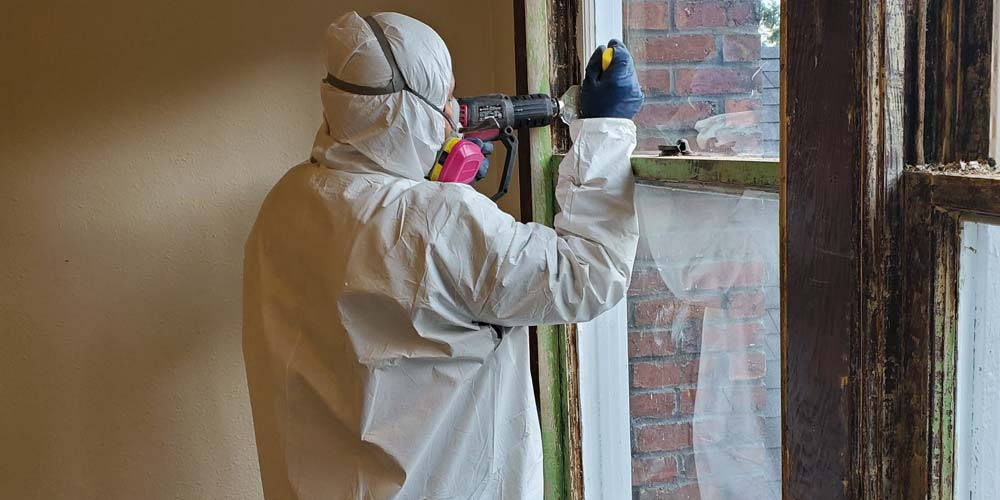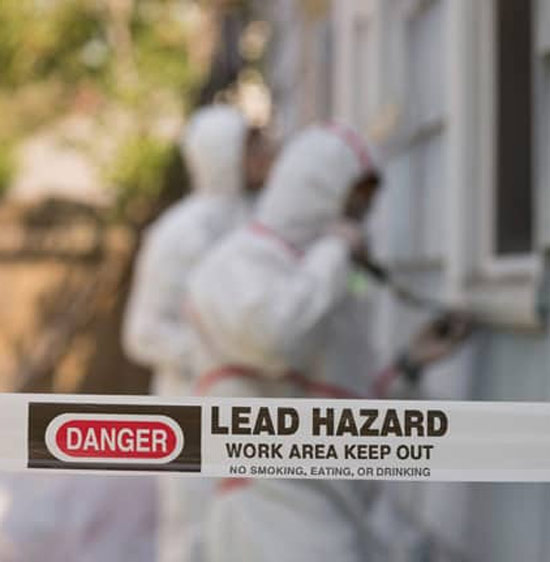Crucial Tools and Approaches for Efficient Lead Violation Clean-up
Addressing lead violations successfully necessitates a thorough method that mixes the right devices with strategic methods. Simultaneously, the usage of specialized cleaning tools, such as HEPA vacuum cleaners and lead-specific cleansing agents, is imperative for detailed contaminant elimination. Reliable containment approaches, including plastic sheet and adverse air pressure systems, are important to stop the spread of harmful products.
Individual Protective Tools
Personal protective tools (PPE) is an essential component in the reliable administration of lead contamination cleanup. The necessary PPE for lead cleanup includes respirators, protective clothing, gloves, and eye protection.
Respirators, especially those equipped with HEPA filters, are vital for filtering airborne lead bits, avoiding breathing. Safety clothing, including coveralls and non reusable matches, avoids lead dust from adhering to workers' garments, reducing the danger of secondary contamination.
Moreover, rigorous training on the correct use and upkeep of PPE is vital. Workers need to be educated on donning and doffing treatments to avoid contamination. Normal inspections and replacements of PPE elements are essential to maintain their safety capacities, making certain a safe and compliant cleanup procedure.
Specialized Clean-up Tools

One more crucial device is the wet/dry vacuum, which can effectively clean up both dust and liquid impurities. These vacuum cleaners frequently include HEPA filters to give an additional layer of safety. Wet cleans or tack towels are likewise essential for surface area cleaning; they are specifically created to record and hold lead particles, reducing the danger of spreading out contamination.
For even more persistent deposits, specialized lead-removal cleaning representatives are required. These representatives are created to damage down lead fragments, making them easier to get rid of. Scrub brushes with durable bristles can aid in this procedure, especially on rough surface areas where lead dust often tends to adhere more strongly.
In addition, encapsulants are made use of to seal lead-contaminated surfaces, stopping the launch of lead dust. These specialized paints and coverings are developed to follow different substratums, giving a lasting service for lead control.
Efficient Containment Methods
Effective containment approaches are essential in minimizing the spread of lead contamination throughout cleaning activities. Carrying out robust control techniques makes certain that lead fragments do not move to unaffected areas, thus shielding both workers and the setting. One key method is using plastic bed linen to secure off infected areas. Durable polyethylene barriers can be mounted from floor to ceiling to produce a controlled workplace, substantially reducing the threat of air-borne lead dirt dispersal.

To improve containment, encapsulants can be used to surface areas that are not being gotten rid of or disturbed. These specialized coatings bind lead dirt, decreasing its schedule for resuspension. Additionally, all personnel have to wear proper Personal Safety Tools (PPE), including respirators and non reusable matches, to avoid contamination spread.
Safe Disposal Practices
Making certain risk-free disposal methods is a crucial element in the administration of lead contamination cleanup. Appropriate disposal mitigates the danger of lead re-entering the setting and jeopardizing public health. The very first step is to determine and set apart lead-contaminated waste from other products. Safe and secure containment utilizing heavy-duty, watertight containers is crucial to avoid spillage throughout transportation.
Delivering lead waste needs adherence to rigorous standards. Making use of certified hazardous waste carriers guarantees that the materials are taken care of responsibly. Paperwork, consisting of shows up outlining the kind and amount of waste, must go along with shipments to track the waste from the site of origin to its last disposal destination.
Designated harmful waste disposal facilities are equipped to helpful resources take care of lead-contaminated products securely. These centers usually utilize advanced approaches such as stablizing, solidification, or chemical therapy to neutralize the lead before disposal. Landfilling in specialized, lined locations that protect against leachate from infecting groundwater is a common practice for last disposal.
Regular training for workers included in lead garbage disposal is important to preserve safety criteria and protect against unexpected direct exposure. By sticking to these practices, organizations can considerably minimize the ecological and health and wellness effects connected with lead contamination.
Regulatory Conformity Tips

Sticking to regulatory conformity is extremely important in the effective implementation of lead contamination cleanup. Understanding and complying with government, state, and regional regulations guarantees not just the safety and health of individuals yet additionally the legal and monetary wellness of the cleaning company. The Epa (EPA) sets rigid standards, such as the Lead Improvement, Repair Service, and Painting (RRP) Guideline, which mandates proper qualification and training for service providers handling lead-based activities.
Conformity begins with a comprehensive evaluation of applicable regulations and laws. Organizations should stay updated on any type of legal changes, which can be promoted with routine training sessions and subscribing to sector updates. Documents is an additional essential compliance aspect; maintaining in-depth documents of all tasks, consisting of assessment records, worker training logs, and disposal materializes, is necessary.
Moreover, involving with accredited lead assessors or run the risk of assessors makes certain that lead risks are appropriately identified and alleviated. Companies have to enforce using Personal Safety Equipment (PPE) and ensure that safety and security protocols are purely adhered to. Last but not least, clear communication with stakeholders, including staff members, clients, and regulatory bodies, will certainly promote a society of compliance and liability, eventually adding to a more secure and extra reliable lead clean-up procedure.
Conclusion
Reliable blog here lead offense cleaning requires the combination of specialized tools and calculated methods to make certain security and effectiveness. Utilizing HEPA vacuum cleaners, specialized cleaning up check representatives, and efficient containment techniques such as plastic sheet and unfavorable air stress systems is important. Individual safety devices (PPE) safeguards workers from exposure, while secure disposal techniques and strict adherence to governing compliance are crucial for sensibly handling harmful waste. Collectively, these procedures significantly reduce health and wellness dangers and add to a cleaner setting.